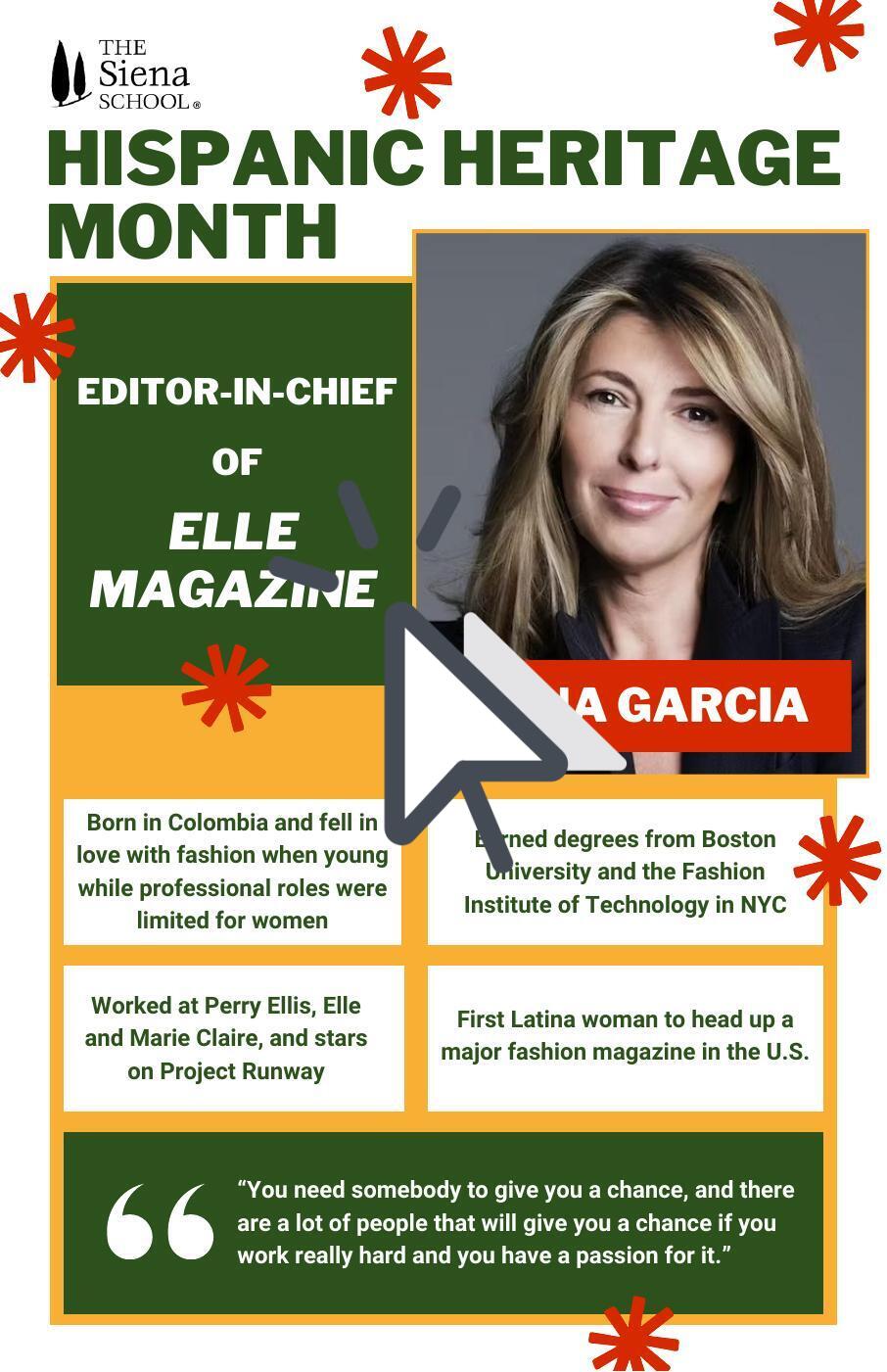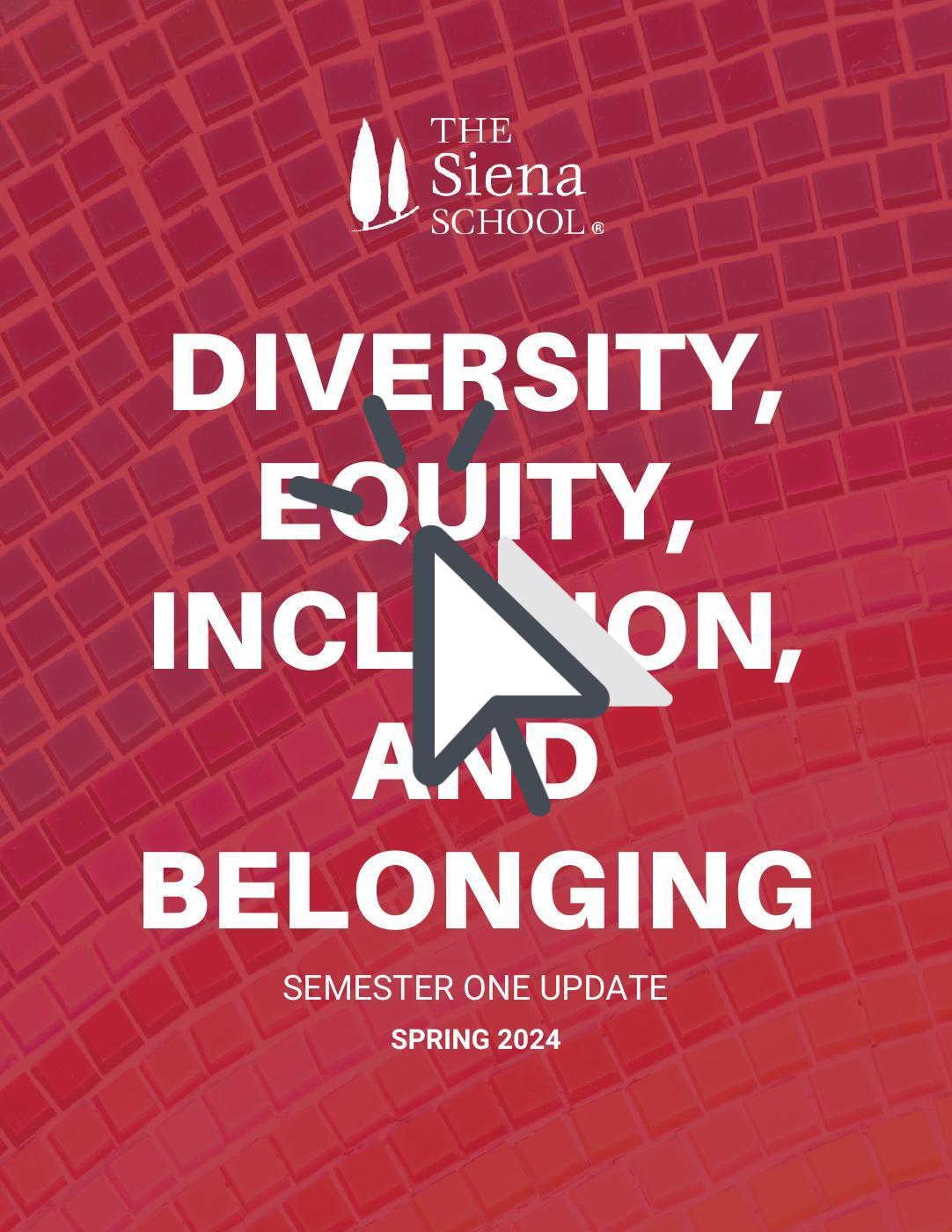Empowering students with language-based learning differences
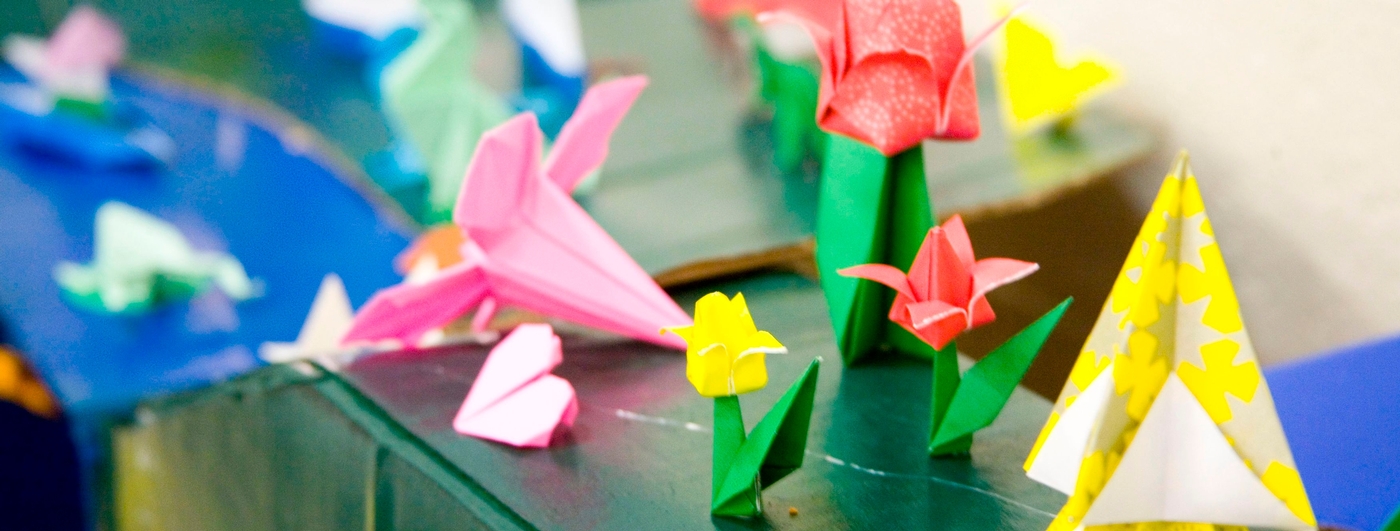
Siena Blog



The Siena School Blog
Discover, Learn, Celebrate, and Empower
Welcome to Siena's blog, your source for helpful, cutting-edge resources tailored to teachers, parents, and other advocates in the learning differences community. We are dedicated to providing a wealth of curated knowledge spanning various topics, ranging from dyslexia advocacy and awareness to classroom teaching strategies, heritage month profiles, and social and emotional health.
MLK Day Volunteering and Service Opportunities for Students
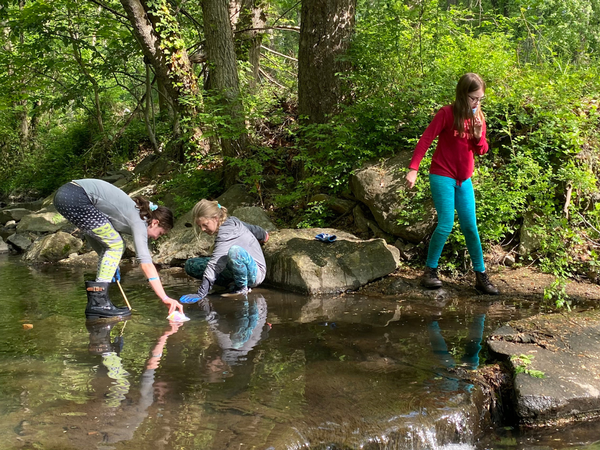
“Everybody can be great...because anybody can serve. You don’t have to have a college degree to serve. You don’t have to make your subject and verb agree to serve. You only need a heart full of grace. A soul generated by love.” —Dr. Martin Luther King Jr.
Martin Luther King Jr. Day is celebrated on Monday January 15th this year, and this provides students and their families with a great chance to give back to their local community on a national day of service.
Below are some options for students to volunteer time in the DC metropolitan area—either for the MLK holiday weekend or at other times this year.
Student Volunteering in the DC Area
- See these events for MLK Day at various Montgomery County parks. Volunteer Arlington and Volunteer Fairfax have a list of opportunities in Northern Virginia. In addition, Montgomery County Parks, Fairfax County Parks, Colvin Run Mill Historic Site, and local parks and recreational facilities often have options for park cleanup and more.
- Montgomery County also has information to register for the annual MLK Day of Service.
- Animal lovers could look into shelters and similar organizations such as Friends of Homeless Animals (Northern Virginia), Animal Welfare League of Montgomery County, Montgomery County Animal Services & Adoption Center, and Humane Rescue Alliance. The Montgomery County Humane Society has opportunities for group service projects to collect donations for animals. (Note: Animal rescue organizations usually require parent or guardian accompaniment for volunteers under 18. See their websites for specifics.)
- Food accessibility organizations such as DC Capital Area Food Bank, Shepherd’s Table, Martha’s Table, Meals on Wheels of Central Maryland, Manna Food Center, and Nourish Now always need volunteers to sort, pack, and distribute food to those experiencing food insecurity.
- Girls on the Run Montgomery County and Northern Virginia have opportunities for junior coaches, race volunteers, and more. Fill out the interest form on their website.
- Shepherd's Table also always needs volunteers to help sort clothing for their Clothing Closet.
- The Greater DC Diaper Bank has opportunities for families to volunteer in their Silver Spring warehouse. (Remember that Siena is also a drop-off location for the Greater DC Diaper Bank, which always needs baby supplies for local families.)
- A Wider Circle has year-round volunteer opportunities that help high school students to earn SSL hours, as well as ongoing opportunities for students ages 7-13. Small Things Matter also has year-round volunteering needs for food distribution, assembling personal hygiene kits, school supply drives, and much more.
Online Resources for Volunteering
Students and parents could also explore these online resources for additional volunteer opportunities in their area:
- Fairfax Youth & Family Volunteering
- Teen Volunteer Opportunities | Fairfax County Libraries
- Montgomery County Volunteer Center
- Volunteer Opportunities in Washington, DC | TeenLife
The Siena School proudly serves students with dyslexia and other language-based learning differences in grades 3-12 on campuses in Silver Spring, Maryland, and Oakton, Virginia.
Summer Programs and Camps: 4 Keys to Success
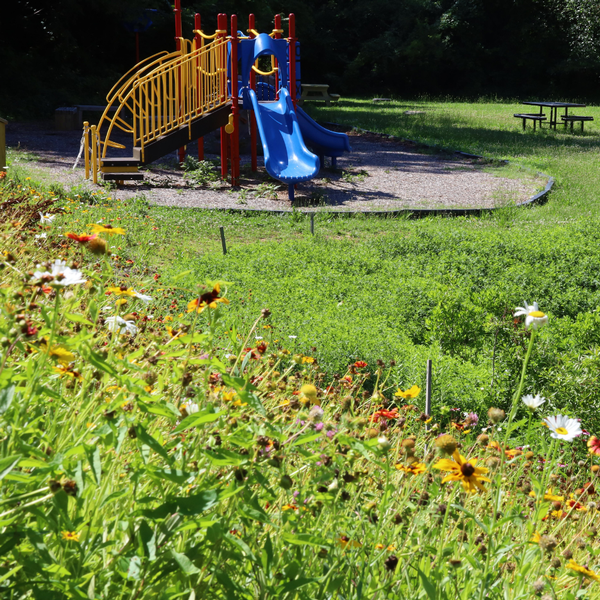
Both Camp Wildcat and my summer class were amazing. I don’t usually look forward to summer camps, but Camp Wildcat made me look forward to waking up and going to camp. —Siena Elementary Student
When the days are cold and the school year is in full swing, summer might feel like a long time away. But a successful summer plan starts in the winter. Parents with elementary and middle school–aged students might be wondering how summer school or camp can be beneficial.
Provided that there is the right balance of structure, recreation, and flexibility, summer academic programs and camps help students in terms of their academic performance and social–emotional wellness.
Benefits of Summer Academic Programs and Camps
Here are four keys for students to have a successful summer experience in summer school and/or a school-sponsored camp:
1. Summer academic programs give students a test drive of the school.
Learning about a new school over the summer can be a great trial run for students before the year starts. Maybe the new building is bigger or harder to navigate than a student’s old school, or classes use technology more regularly than students are used to. Or, a student just needs some extra time to get oriented to a new learning environment and school community.
Whether it’s one or all of these, think of summer school as a dress rehearsal for incoming students to start learning the tools, technology, and other systems that could be part of the norm at the new school. This is especially important for students with language-based learning differences, because they might want to start developing the accommodations and self-advocacy practices that a school like Siena has integrated into their curriculum, including our multisensory strategies.
As a Siena summer school teacher notes, “It’s great for new students to be around other new students before they’re around returning students once the school year starts. This makes the transition easier for new students because they’ve experienced a new school with their peers first.” Meeting some students and teachers over the summer gives incoming students a degree of familiarity with the community that will be such an important part of their daily lives once the year starts.
2. Summer academic programs help assess students' learning needs.
When students take summer classes, their teachers can start to identify their individual learning styles and executive functioning skills; this helps teachers develop learning profiles for their students to prepare for the coming year.
“Our summer classrooms provide the same individualized and research-based multisensory learning environments as during the regular school year,” notes Carolyn Bottelier, Science Department Chair and Director of Summer Programs. “Siena students can get help from teachers in a pressure-free environment to complete assigned summer work.”
Research shows that a summer academic program helps with retention, especially for students with dyslexia or other language-based learning differences. For Dr. Sally Shaywitz of the Yale Center for Dyslexia & Creativity, “If a child has been practicing a given set of words and word families during the school year, representatives of the word are beginning to find a permanent home within the [brain’s] word form area.” (See the article that quotes Shaywitz here.)
Students with dyslexia typically need more time and repetition to effectively store information within the automatic reading system; summer programs provide that needed time and repetition in a flexible, personalized environment.
3. Summer camps and academic programs support social and emotional wellness.
I was nervous at first, but the teachers and students were really nice. They made me feel like I was part of the school community. —Siena Elementary Student
Attending a summer program or summer camp as an incoming student could be especially good for anxious learners to get a microexperience of the school, their peers, and teachers. Programs and camps allow students to socialize and form community bonds to lead them into the new school year, in addition to being gradually introduced to the school’s teaching methods and overall learning environment.
As the Yale Center for Dyslexia and Creativity article notes about camps in particular, “Summer camps can also be important for dyslexic students who have deep interests that get sidelined or shortchanged because of academic demands during the school year,” which succeeds in “connecting [them] with other students who share [their] learning profile.”
4. Summer camps and academic programs prepare students for the school year.
“The key to a successful summer for students with dyslexia,” reiterates Director of Summer Programs Carolyn Bottelier, “is balance. Summer at Siena provides that balance for students.” Providing opportunities for both exploration of strengths and interests, as well as providing academic support, helps create a well-rounded summer.
An added benefit of attending summer programs or camps is getting students more comfortable navigating the school, learning the teachers’ expectations, or allowing for exposure to the school to see if it is a good fit for the student and if they will thrive in that setting.
Regardless of whether a student will attend the school hosting the summer program or return to another school, summer academic programs give them community connections, content knowledge, and awareness of their study skills and executive functioning needs. A summer program or camp could also highlight areas of improvement academically or social–emotionally for students as the new year approaches.
Summer downtime after a long school year is important, but so too is (some) summer work time to keep students’ skills sharp and—particularly for students with dyslexia—word retention active.
Need more resources for parents and community? See The Siena School blog for ideas on ensuring a successful school visit or how summer academics or tutoring can each be beneficial.
Resources for Students with Learning Differences
- Learn more here about Siena’s summer programs at its Silver Spring and Northern Virginia campuses.
- Siena Tutors provides individual instruction with experienced teachers to students throughout the United States in grades 3-12. Reading Rockets also has good information for finding a tutor for children with dyslexia.
- Education Consultant Ann Dolin’s website and YouTube Channel offer more resources and tips for avoiding the summer slide.
- LD Online and the Atlantic Seaboard Dyslexia Education Center (ASDEC) have a wealth of resources for families navigating academics and tutoring needs.
Connecting With Your New School Community
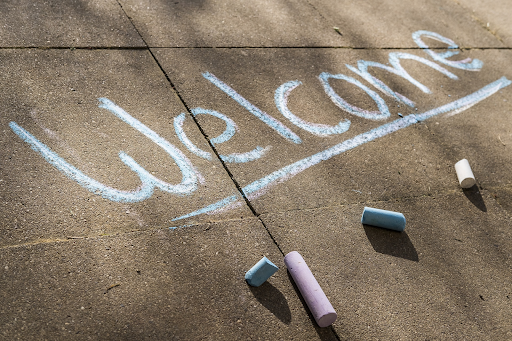
Note: This post contains updated information from earlier blog posts (2018, 2020).
Whether you’re brand-new to a school or a returning family looking to welcome new students and their families, late summer is the perfect time to start building connections for the upcoming school year.
Since last school year began virtually for many districts, the beginning of the 2021-2022 school year might also feel new, even for returning students. It’s especially important, then, to get students in touch with each other soon so they can start building the relationships that they’ll bring into the new school year.
Making Connections: Before School Starts
- Review the Parents page on the school website for resources, supply lists, the school year calendar, and more.
- Learn about your school’s Parents Association. Remember that student grade representatives are great for welcoming new families. Once they have contact information for new families, grade representatives can reach out and arrange various activities. This is a wonderful way to meet families who have been at the school for years, as well as learn about grade-specific events.
- Check to see if your school has a private social media group for families to share information and resources. This could be a great way to connect with families across grade levels. You might need a moderator to give you access to the group, but this is usually a simple process.
- See if parents already have access to the school directory to contact other families in your child’s grade and arrange a time and place to meet (such as a local park or other outdoor space). Parents could also trade ideas for small-group social activities like hiking or biking in locales with adjacent trails (such as Brookside Gardens, Lake Needwood trails, Lake Frank, or Meadowbrook Park in Montgomery County, MD). Parents could end such activities with a potluck picnic to give everyone a chance to learn more about each other.
- Check your school’s website or blog for any resources geared toward parents and the community.
Making Connections: The New School Year
- Attend school-based meetings: often, schools will kick off the transition to the new year by hosting a grade-level event to allow the families to become involved.
- Attend Back to School Night, which is typically the first major school event of the year. While you’re waiting to enter the classroom and meet your child’s teachers, why not introduce yourself to a nearby parent? There is a chance that their child is a classmate and might be a great resource for homework help.
- Go to a Family Picnic or similar gathering if your school offers one. This is a wonderful way to meet families who have been at the school for years. If you are a returning family, you remember how important this event was to help with the transition to a new environment. Make sure you introduce yourself to the new families and help them get engaged with the school’s community.
- Consider attending parent association meetings as a way to meet new school members. There is always time to network before and after the meeting. You will also gain valuable insight from the shared topic of the evening.
- Plan a regular biweekly or monthly meetup of parents after drop off at a local park or café.
- Remember that you can volunteer to be a Grade Representative. This will definitely get you connected with every parent in your child’s grade. Grade Reps are a great resource to help you learn about activities related just to your grade.
Helping new families get acclimated to the school community is mutually beneficial—particularly as students continue to adjust to changing guidelines for social interactions.
Whether you’re just joining The Siena School or returning for another year, don’t hesitate to find a way to get involved and stay connected with the community.
It’s Time To Be Social Again: Are Young People Ready?

With more tweens and teens getting the COVID vaccine, opportunities for social engagement are increasing. While many are looking forward to this return to normalcy as summer begins, many others are understandably feeling anxious about socializing after 15-plus months of limited social interaction.
Here are some tips for adults to help our tweens and teens navigate this reemergence while also caring for their social and emotional health.
Acknowledge the Issue
Engaging with others can feel hard when you’re out of practice; remember, also, that some teens may be nervous around germs and getting sick. Adults, validate your teens’ feelings around these feelings of worry; even share your own hesitations. Once you have validated these feelings, help the teen and/or tween in your life think about ways they’ve successfully coped with similar worries in the past.
We always want to encourage this reengagement with social activities (even on a small scale) as prolonged absence from socializing can lead to avoidance, which can lead to more pronounced worry.
This recent blog post from Screenagers has some examples and conversation starters for easing everyone back into social interactions this summer and fall. “We...should be applying scaffolding and can experiment with trying to help in different ways,” Dr. Delaney Ruston writes in the post. “The type of help will vary depending on our kids’ ages and situations, but I want to make sure we are all aware that there is a role for our social engineering at times.”
To begin guiding these social interactions, it may be helpful for parents to make a list of social opportunities that feel comfortable at first, such as outdoor-only activities, and add to that list as they (and you) get more comfortable.
Start Small
Big group activities may be too overwhelming at first, so it is perfectly acceptable to start small. Invite a small group of people (or even one or two peers for a social outing) and keep the time short to ensure that your teen/tween feels comfortable. Parents could talk with their teen/tween after the small social outing to assess what worked, what might not have, and what could work for a future outing.
Have a Purpose
A get-together with no purpose may be too open-ended and can lead to more anxiety. Instead, help your teen find a shared purpose while socializing. Some ideas for outdoor or indoor activities include:
- Walking to a store
- Baking/cooking
- Service learning/volunteering
- Playing a game (tennis, board game, etc.)
- Watching a movie
- Enjoying a meal together in an outdoor picnic
- Hiking
- Biking
- A sporting event
Have a Start and End Time
Establishing a start and end time creates structure, which can assist with teens’ comfort levels. Check in when planning an event and ask them how long seems reasonable. Many people may feel emotionally drained with long periods of socializing at first. Parents and/or teens can always increase the duration of activities as time goes by.
Get Input
Solicit input from all parties. When teens are excited about an activity, it will help ease some worry and give them something to look forward to.
Practice
Just like with any skill, practicing our social skills is important. If your teen is open to it, work on conversation starters. Discuss a recent social situation you were involved in and go over how it went, what went well, and what was awkward. The more we normalize awkwardness in social situations, the more comfortable we all become; it is normal!
As we slowly ease back to bigger groups and more social opportunities, you should see your tween’s or teen’s comfort level increase. If you are concerned that they are isolating themselves or seem overly anxious, it may be helpful to reach out to a therapist to practice these skills. Here are some resources that may help you as you navigate finding a therapist:
- Child Mind Institute/Social Anxiety
- Child Mind Institute/Who Can Help with Diagnosis
- Inclusive Therapists
- Find A Therapist: Psychology Today
What we have seen over this last year is that our teens and tweens are resilient and flexible and, given time and practice, these social skills will reemerge.
See The Siena School blog for more posts about social and emotional health, including some lessons in self-care and tips for returning to in-person school.
Siena's Head of School Challenge, 2020-2021

I liked the Head of School Challenge because it gave me some goals to set during distance learning. —Middle School Student
This year, Siena introduced a new initiative to keep students active and gamify the school year: the Head of School Challenge.

In celebration of Siena’s 15th anniversary, we designed 15 challenges around the arts, athletics, reading, social and emotional health, and more to energize the school community. Many of the challenges incorporated the 15 theme to mark the school’s anniversary year.
We introduced the Head of School Challenge at an all-school virtual assembly in the fall (complete with a video overview). Students then started completing the tasks, all of which could be done virtually. Some especially popular challenges were:
- Find a 15: Find the number 15 somewhere (and take a selfie with it)
- 15 Acts of Kindness: Perform 15 acts of kindness for friends or family and then reflect on your acts
- Coding: Show off your creativity and animate SIENA by code
- Design and Creativity: Make something to show what Siena means to you (see video example below)
- Read 1,500 Pages: Read for at least 20 minutes a day and see how it adds up
- Thank 15 Teachers: Show gratitude for teachers who’ve been especially helpful and supportive this year
- Sports and Exercise: Play your favorite sport or exercise 3 times per week (for at least 15 minutes) for a month
- Learn Something New: Choose a sport, hobby, activity, or skill you’ve always wanted to try
I really liked doing the Head of School Challenge because I could get House points. I also had a lot of fun doing the activities, and it gave me something to do outside. —Middle School Student
For every challenge completed, students earned points for their Houses, with bonus House points, gift cards and school merchandise waiting for the top finishers.
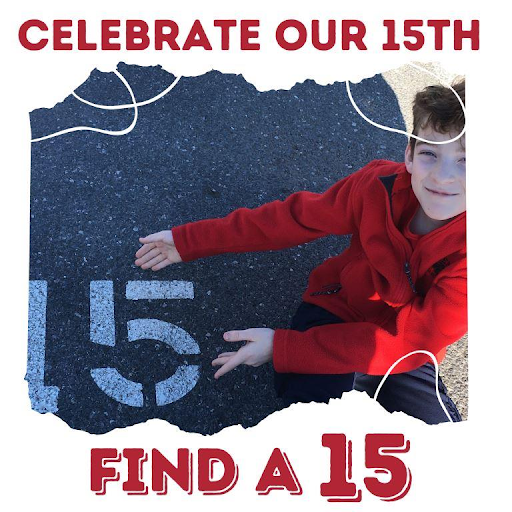
All of Siena’s students and faculty are sorted into four Houses, which are modeled after the seventeen Contrade of Siena, Italy. Siena’s Houses (Drago, Leocorno, Pantera, and Aquila) are composed of a mixture of 4th-12th grade students who compete over the year for house points in athletic and academic challenges. This year, the Head of School Challenge upped the ante, as it were, by giving students the chance to help both themselves and their Houses. The winning student will earn almost 400 points for their House.
Since students were still learning from home at the beginning of the year, the Head of School Challenge helped them feel connected to the school community and varied their routines. In a time of limited social activity, the Head of School Challenge enabled students to boost their physical and mental health, strengthen community connections, and have a fun, school-wide activity to break up the routine of distance learning.
I really love doing the House challenges. It helps me learn new things. My favorite House challenge was finding a 15 because I made Rice Krispies Treats and used the sprinkles to make a 15! —Middle School Student
Students have experienced a lot of change—which was outside their control—in the past year. The Head of School Challenge gave some control back to our students through positive, community-building activities that supported themselves and their Houses as a constant in a variable year.
Enjoy this middle schooler's Design and Creativity challenge about science:
Teacher Appreciation Week: How Students, Parents, and Staff Can Help

Teacher Appreciation Week 2021 runs from Monday, May 3, through Friday, May 7. Regardless of the grade level or type of school, teachers across the country have done a lot of commendable work in the past year.
Showing teachers how much we value their work is important. They don’t necessarily expect gifts, but sometimes even the smallest acknowledgement makes a huge difference in a teacher’s day.
Traditionally, celebration is a week-long event at Siena. Faculty and staff have received flowers, food, and thank-you messages as a show of gratitude. With the shift to virtual or hybrid learning last year, schools and families had to introduce new ways of showing their gratitude virtually: video messages, gift cards, and e-flower delivery among them.
PTO Today has some ideas (arranged by budget) for celebrating teachers from a distance, such as student photo collages. Many businesses are offering educator deals and discounts, such as Barnes & Noble, Headspace, and Bonobos. See Edmentum for more ideas.
Here are some ideas for how the school community can show its support for teachers this year, whether virtual or in-person:
How Students Can Support Teachers
- Write a personalized note to a favorite teacher sharing a fun memory and saying why they’re thankful for them. It might reach them at a time when they could use a simple show of kindness.
- Chalk messages in the parking lot or walkways around the school building (with approval and supervision).
- Put your newly learned tech skills to practice and create a personalized video, Flipgrid, or WeVideo.
- Make a sign for your teacher’s classroom door that says Thank You or We Care About You.
- Collaborate with your class to say thank you in a creative way that teachers will appreciate (such as a group dance or images of their favorite sports team, celebrity, and more).
How Parents Can Support Teachers
- Email a virtual card and/or short video message from their child to the teacher.
- Write a personalized message about changes they’ve seen in their child thanks to the teacher’s work and dedication.
- Arrange for e-bouquets of flowers to arrive in teachers’ inboxes.
- Work with class/grade-level parents to purchase gift cards for food, self-care, and more.
- Have the class sign up to bring in items according to a theme. For example, a summer vacation theme could include sunscreen, a beach towel, sunglasses, a book, and beach snacks to create a gift box.
- Create a fun gift basket of various coffees and/or teas for teachers.
- Ask the teachers if there’s anything parents can do to help between now and the end of the year—it could be as simple as crowdfunding some items for the classroom.
How Staff Can Support Teachers
- Give the gift of time. Could staff offer to cover part of a class, read to students, or do something else to give teachers a break? Or, could school leadership surprise teachers with a day/half-day off (schedule permitting)?
- Record students reciting “What [School] Means to Me” and share the video with teachers and on social media.
- Offer gift baskets with treats, personal care items, and more. Etsy and Pinterest have many good ideas.
- Provide gift cards for food and other items that can be delivered.
- Put up a banner in the hallway and allow students to write thank you reflections.
- Stencil You are Appreciated on classroom windows in liquid chalk or other erasable markers.
- Create Word Clouds for each teacher, highlighting words from the students to describe them.
- Design a t-shirt for them to wear and have a dress-down day (jeans and t-shirt).
- Choose a superhero-themed day, where the teachers dress up as the heroes they are! (Go one step further: have a DC vs Marvel battle during the day and see who has the better team.)
- Give stickers and pins to the teachers to wear during the day.
Heartfelt messages, gifts, games, and other acts of kindness during Teacher Appreciation Week 2021 won’t magically make teaching any less challenging. But they will remind our teachers that they are appreciated every day for continuing to support our students throughout this extraordinary year.
Have another idea for showing your appreciation for teachers this year? Leave a comment below.
See the parents and community section of The Siena School blog for additional resources for families.
Service Learning and Volunteering during the Pandemic

Siena students have always been dedicated to community service and other kinds of volunteering. Given the many pressing needs of frontline workers, small business owners, and more during the COVID-19 pandemic, Siena’s students have been especially active in the past year.

In the words of one high school student who used his spare time to make 3D printed face shields for frontline workers last year, “I wanted to do my part to help medical professionals who are working to save lives.” Many in our community have felt similarly compelled to do what they can to help others.
Siena Student Volunteers and Community Service
Siena students participate in school–based community service programs while earning service-learning credit through independent work and internships. Students continue to be good citizens and stewards of their communities in various ways:
- In November 2020, one middle schooler prepared food bags for Small Things Matter, and two others cleaned up a stretch of Little Falls Parkway.
- Also in November 2020, Siena families generously donated food (228 pounds of it!) to Nourish Now to help members of our greater community who were experiencing food insecurity during the holiday season. Another food drive is planned for the spring.
- In January 2021, Siena’s Help Club helped raise over $1,000 for the Holy Cross Silver Spring Health Clinic.
- A middle schooler continued Siena’s tradition of volunteering for MLK Day by making chew toys for service dogs.

As part of service learning this school year, Siena students have also helped out many organizations in the DC area, including:
- Anacostia Watershed Society
- Bretton Woods Recreation Center
- Empowering the Ages
- Link Generations
- Montgomery County Board of Elections
- Rockville Weed Warrior Project
- St. Martin of Tours Food Pantry
- Temple Sinai
- A Wider Circle
When submitting their service learning hours, students include a written reflection on these questions:
- What need did your service address?
- How did your action benefit individuals in the community?
- What did you learn about yourself as a result of your actions?
Volunteering and Service Opportunities for Students
Anyone wanting to impact Siena’s local community can explore options through Montgomery County’s volunteer center. Siena is also a drop-off location for DC Diaper Bank, which always needs baby supplies for local families.

Students could further expand their volunteering with these virtual opportunities:
The past year has reaffirmed how important community bonds and service are. While handling their academic and extracurricular responsibilities, Siena students have also maintained close connections to their communities through a wide variety of volunteering and community-building experiences.
How Parents Can Maintain Support Networks

It’s been quite a year, hasn’t it?
Given how much has changed in terms of parenting, schooling, work–life balance, and more, parents should remember that they’re not alone. A few months ago, Siena counselor Holly Rothrock wrote an excellent blog post on experiential self-care lessons. While originally written for students, these lessons are relevant for parents in caring for their mental health and feeling connected.
Online Resources for Support and Community
Siena’s website has a number of resources for parents about learning differences, college applications, and more. Here’s a list of books we have in our parent resources library that you might also find helpful. Parents needing to feel connected as more schools are reopening could check some of these educational resources:
- Parents’ Place of Maryland includes access to links, podcasts, and more about schooling, mental health, and COVID.
- The Parent Encouragement Program (PEP) has some resources specific to COVID and telework, as well as parenting classes, a blog, and resource library.
- Hey Sigmund has plenty of good material about anxiety management and sleep habits for kids.
- Child Mind Institute, while not a support group per se, has a lot of great information to complement the above resources.
Parents could also check if their children’s schools have any online groups for sharing resources, advice, and support.
Resources for Parents of Children with Learning Differences
- Community Connections for Parents is a support group for parents of children with learning differences, ADHD, and anxiety.
- The Study Pro (Virginia) hosts a learning series for parents. The topics range from executive functioning and anxiety to writing coaching for various grade levels.
- ADDitude has ample information for ADHD and a discussion forum.
- On Facebook, parents can consider joining Dyslexia Support and/or Decoding Dyslexia MD. Dyslexia Support is a private group that offers practical advice, book recommendations, and emotional support. Decoding Dyslexia MD is a public group with posts on where to find a tutor, where to get your child assessed, questions about schools, and more.
- WISER has events, webinars, experts, and more for parents of children with learning differences.
- Understood has plenty of information for families, including the Understood Community.
See more of The Siena School blog’s resources for parents, including how new families can connect with the parent community.
Do you have any favorite or particularly helpful online resources to share? Comment below or email me. You can be anonymous if you wish.
Note: We do not endorse any of these websites or resources. Always check the privacy and appropriateness for your child.
Healthy Lunches and Snacks for School Reopening
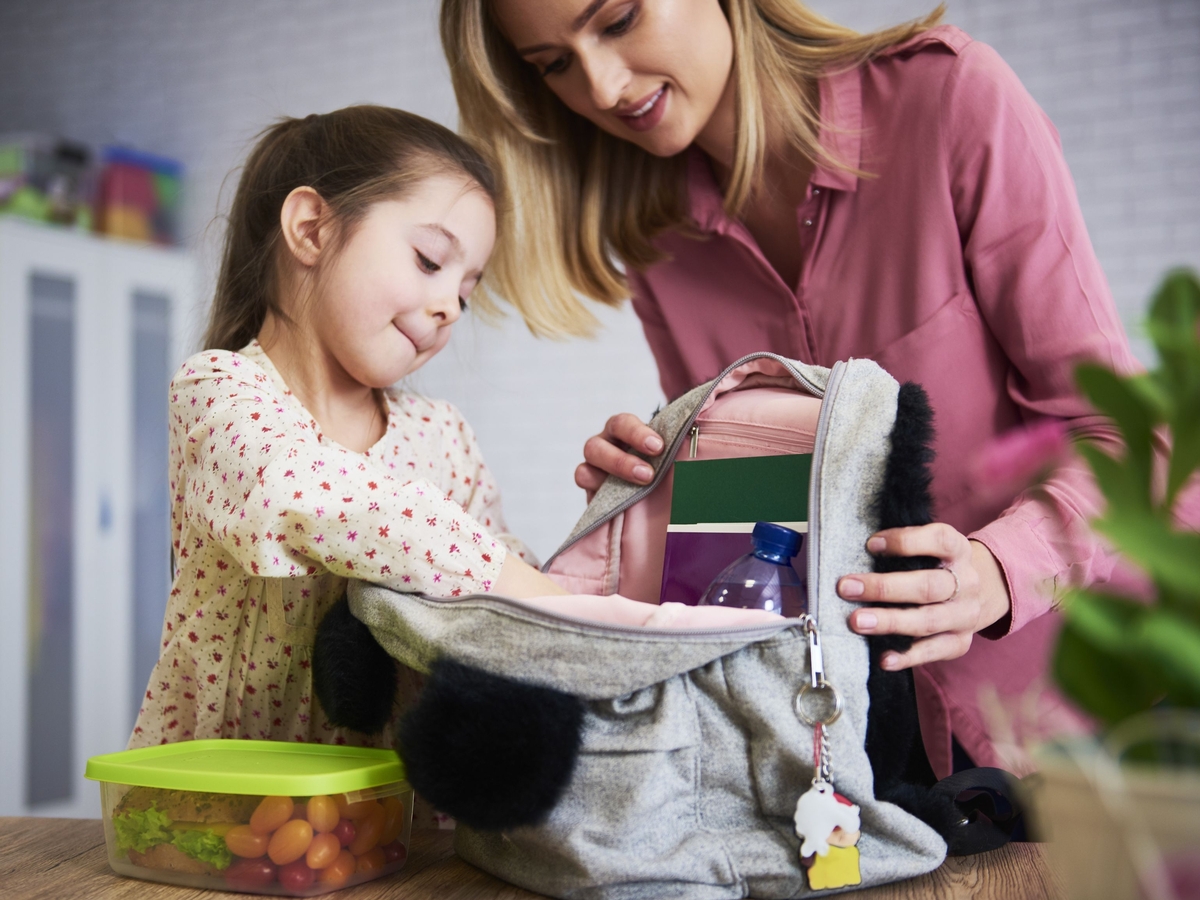
With more schools planning to begin in-building instruction in the coming weeks, are you wondering how to adapt to rules about social distancing and lunch routines?
Lunches and snacks that are healthy, convenient, and don’t need to be reheated or refrigerated at school are especially important, since many students won’t be able to use microwaves or other shared equipment. What are good options for lunches, snacks, and food containers when students return to the school building?
Food and Snack Ideas for School
To maintain a healthy school environment, students’ meal needs should (1) be self-contained, (2) require minimal touching, and (3) not need refrigeration or reheating.
Although you’ll probably continue sending some of the same lunch and snack foods as before, there are some additional options (including ideas for touchless meals) to limit foods that need to be eaten by hand:
- The Sweet Potato Chronicles gives many ideas for touchless lunches and snacks that can be reheated before school, stored in thermoses or similar containers, and eaten with utensils. Watch writer Laura Keogh demo some recipes.
- This clip from Breakfast Television (Canada) shares recipes and other ideas from two work-from-home mothers.
- UC Davis Health has several healthy lunch and snack ideas that parents could adapt based on their kids’ tastes and dietary needs.
- A personal favorite are peanut butter and banana energy bites; they’re healthy and easy to make—even for kids! (Almond or cashew butter could be substituted for peanut butter.)
- There are many healthy options for homemade Chex Mix or trail mix: cereals, nuts, dried fruit, yogurt raisins, and more all go well together and are easy to dole out into individual servings.
- Prepackaged, nonperishable snacks like cereal bars, newtons, and granola bars are portable and durable.
- See some nut-free options from Momables and A Mindful Mom, including a DIY pizza, mini ham-and-cheese bites, and lunch wraps.
Meal options such as these are healthy and portable; they can also be eaten with a fork or spoon to be touchless. Kids can help choose or put them together days in advance and then be ready for the week.
Lunch Containers and Other Supplies for School
Since students won’t be able to use microwaves or refrigerators at school, they’ll need portable lunch equipment to keep food at the right temperature, such as:
- A food thermos or soup container for meals they can warm up before coming to school;
- Lunch containers with either freezable lids or built-in ice packs in lieu of using a refrigerator;
- Reusable cutlery with its own carrying pouch;
- Durable and insulated water bottles for cold or warm drinks;
- A CrunchCup for cereal on the go;
- Durable lunch boxes and bags—Good Housekeeping has a list of the 15 best lunch boxes and bags (including some insulated ones); and
- An extra sealable bag for students to put their mask in while eating. (Note: there are many options for reusable sealable bags.)
Clip-on hand sanitizer is especially important as well; many parents have gotten good deals on large containers of hand sanitizer for refilling portable ones. Travel-sized antibacterial hand wipes are also useful, and students could maintain cleanliness by putting the used wipe in the foil pouch for later disposal.
Have a favorite snack idea or supply? Let us know in the comments.
If you need more ideas and resources for parents, see The Siena School Blog, including helping left-handed students and ensuring self-care.
*Note: We do not actively endorse any of the above sites, recipes, or resources. Please check them for allergens and other food sensitivities for your child.
#CreatingCommunity
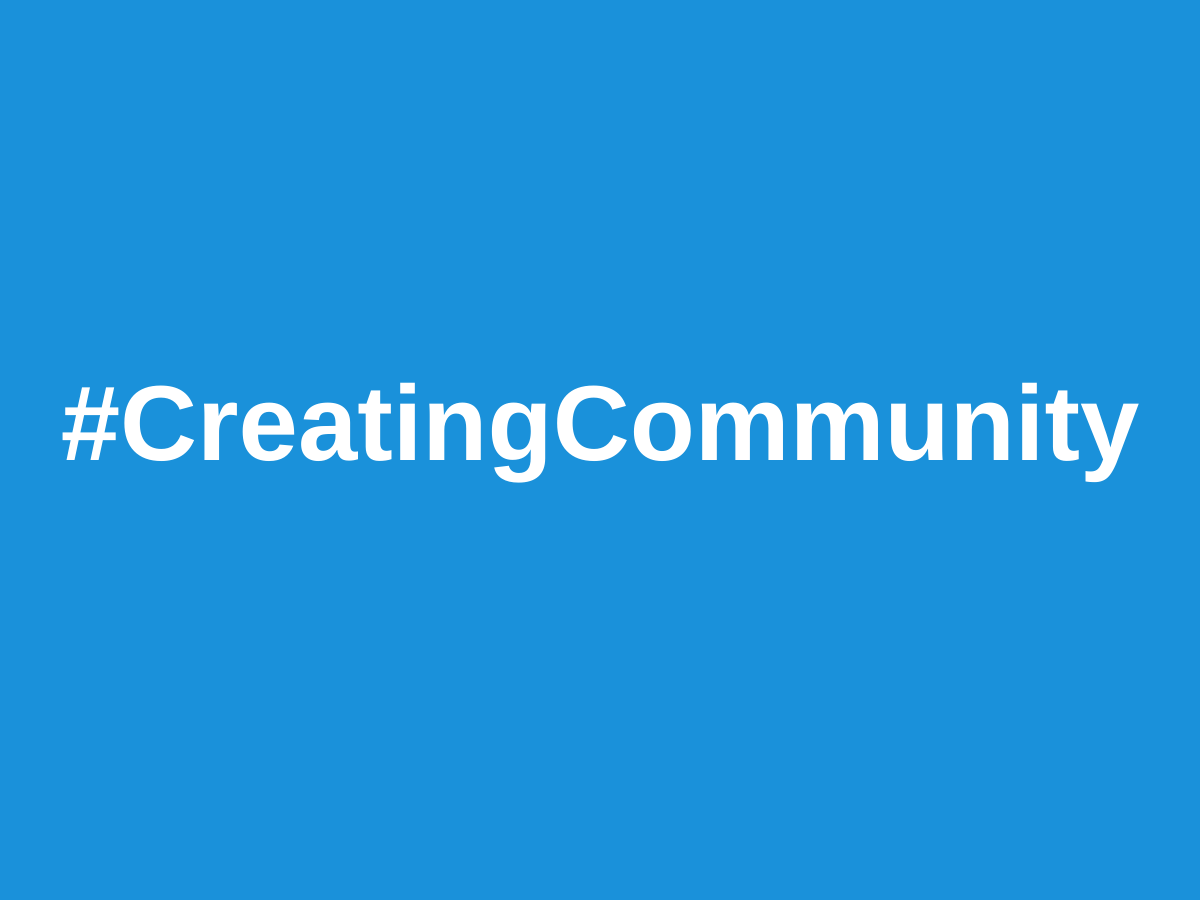
#CreatingCommunity
Joseph Fruscione, Communications and Advancement Associate
I can use Twitter professionally? Not just to share pictures of a concert or game I go to? Or not just at customer service reps?
I could ask questions about teaching strategies—and get useful answers?
Or I can just go to a conference and share what people say?
So, people will read and share my content on Twitter?
We’ve heard these and similar questions often. Education is very much online now, particularly on a platform as dynamic as Twitter. Learning doesn’t stop in a school’s classrooms, hallways, or conference rooms.
It’s relatively easy for teachers to get started on Twitter; it’s also quite effective. After getting established online, teachers can do a lot for themselves, their schools, and their students by having a strong, active Twitter presence. Those 280 characters per tweet can do a great deal of work.
Here are some hows and whys to get started:
Always be connecting. There are many K–12 educators to follow, which helps teachers grow their networks, share resources, and discuss relevant or trending topics. They can start with high-follower accounts like Suzie Boss, Kevin Jarrett, Education Writers Association, International Literacy Association, or Edutopia. Who are they following, engaging with, and retweeting? Who follows them? Now an interested teacher research these accounts’ followers to further expand their network. These and many other educators can help connect teachers’ schools, classrooms, and professional selves to the larger digital world of K–12 education.
Use Twitter as one facet of an effective online presence. Writing in bursts of 280 characters enhances a teacher’s professional experience and skills as one of hundreds (or more) of educators working in a specific field. Cross-posting on platforms like Facebook and LinkedIn helps teachers boost their signals, learn from each other, and connect with even more people.
Siena humanities teacher Jabari Sellars sees Twitter as an “invaluable” site of professional exposure for educators. “Social media,” he reflects, “helps me share my expertise as a literacy and pop culture educator, as well as connect with fellow educators and the discourse at large.” He’s also used some videos from his blog to model for students’ assignments and to spark ideas for their college application essays.
Share work and classroom experiences. This is a very online generation, but students might not always associate Twitter with learning. Think about how much pride students will feel to see their classroom projects or successes shared with teachers across the country. Having a strong social media presence also lets teachers show off their expertise, such as what Siena English teacher Maya Furukawa did in early October about edu-blogging in her classes.
Live-tweet a professional event. Teachers could use the event’s hashtag(s) to find other educators (e.g., #NCTE2019 from their recent conference). They can also share snippets from interesting presentations, pictures, and parts of any panels or workshops they’re participating in. Some have used Twitter to arrange networking meet-ups or informational interviews at the events. When live-tweeting, teachers can use Twitter threads to keep thoughts and content together, as well as help followers pick up the conversation mid-thread and trace their way back.
Here’s a great example of live-tweeting from Siena science teacher Jennifer Chambers. In November 2019, Siena hosted a colloquium on Authentic Assessment. Jennifer live-tweeted parts of education consultant Suzie Boss’s keynote. We also used our @TheSienaSchool handle to share pictures and quotes from Boss’s keynote, as well as Siena director of technology Simon Kanter’s presentation. Here’s what live-tweeting could look like:
How do @TheSienaSchool Ss feel abt traditional vs #authenticassessment? Data is clear! #authenticsiena @teacher2teacher @ASCD @edutopia @PBLWorks pic.twitter.com/C2rCejrQUa
— Jennifer Chambers (@hikingalongkids) November 15, 2019
Invite experts from the field to add authenticity to #PBL for Ss. Gives Ss agency. @TheSienaSchool @suzieboss @PBLWorks #authenticsiena pic.twitter.com/WrqOAGzkfV
— Jennifer Chambers (@hikingalongkids) November 15, 2019
Teachers with their own blog or website can have their presentation or any other materials there for easy sharing on social media. It’s incredibly easy to start a blog or website on WordPress or Medium to strengthen teachers’ digital presence. (See Brian Crosby’s blog for a good example.)
Grow the school’s online community. Teachers are essentially using Twitter to practice what’s called attraction marketing. Let’s say Siena’s Jabari Sellars tweets about an effective lesson or assessment practice. One of his followers retweets it, so now he potentially has hundreds more people seeing and retweeting it. Since Sellars is new to these people, they (1) follow him and then (2) take the link in his bio to his blog or to Siena’s website. Now the attraction marketing work happens: they have access to see all the great things Sellars’s colleagues and students are doing. Regular tweeting leads to regular networking, which then helps teachers expand both their connections and access to professional resources.
Learn from other teachers. Back in the fall, we asked educators why they use Twitter professionally. We got many great responses within minutes—too many to share here. Kate Weber, for instance, said she uses Twitter for “1. Finding current articles, topics, and resources to share with students and 2. Creating a community with other educators.” Mindy Carlson, director of admissions at a Montessori School in Maryland, uses it to “connect with other teachers and to connect with students.”
Here are some more insights on Twitter’s professional value from other educators:
- Karen Costa: For social support and connections (I work from home). To promote ideas, research, and events that make #highered better for faculty and students.
- Adam Marcus: To find lesson plans and network with other teachers. Also, to find events to share with my families and promote what I do in my classroom.
- Nyasha Junior: Learning about new research. Finding out about conferences & calls for papers.
Siena’s Jennifer Chambers added: “Twitter connects me with educators around the world to share and receive ideas that can enhance my instructional leadership and improve student outcomes.”
It’s never too late to join Twitter or other platforms. Yes, students and colleagues at their schools know all the great work teachers do daily, weekly, and monthly. But, there are many other educators who want to know what students are learning, how they’re learning it, and what’s next. Teachers can do great work with regular Twitter use: finding the resources for themselves and their students; making the connections to new and experienced colleagues; using the hashtags; sharing new and old content; and ultimately realizing how connected they are to this generation of students and educators.

